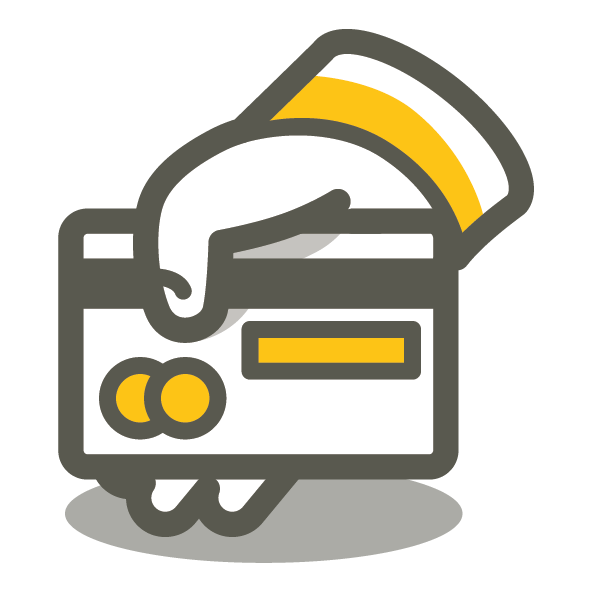Many small and medium-sized retailers are facing spiralling arrears as they struggle to keep up with rent, Crown debt and loan repayments, which have been building during the pandemic.
Spotting the signs of trouble earlier on and adopting a proactive approach to managing cashflow and communicating with lenders, can rapidly improve their chances of riding out the financial challenges ahead.
Since 2020, when the pandemic struck in the UK, retailers have been learning how to acclimatise to challenging trading environments and constantly changing consumer demands and trends.
The uncertainty of when the UK economy would be in and out of lockdown caused havoc for many retailers and still now, even though things are largely back to normal, the increase in inflation and the cost-of-living crisis is going to bring different challenges, because as money gets tighter, consumers will now think twice before spending money on peripheral and non-essential goods and services. For big and small retailers, the cost-of-living crisis has arrived at very much the wrong time; when firms were hoping to start recovering some of the losses they had suffered during the pandemic.
This is proving integral to many firms as many of them in the sector are now faced with insurmountable debt and cashflow difficulties, forcing a large number into insolvency. In May, the number of registered insolvencies increased by 79% year on year, with numbers reaching highs of 1,817, up from 1,014 in May of 2021. Although the percentage increase is significant, it is important to keep in mind that the 2021 figures were also down due to the Government help that was available to firms via loans and insolvency restrictions, brought in via the Corporate Insolvency and Governance Act 2020.
What can Retailers do to spot signs of financial distress early?
There are several ways that retailers can identify signs of financial distress. Ensuring that they act as early as possible could help them to avoid damaging repercussions in the future. For example, introducing key performance indicators (KPIs) can help business owners to determine how the business is performing each month. Monitoring key data is a very effective way to identify a cashflow crisis.
Personal finances
SME retailers should also be aware of how the business may be affecting their own personal finances. It could be tempting to invest one’s personal money into a business in the short term to pay for costs, such as wages, rent and rates, but it is essential to consider whether the business remains viable such that it is able to repay the debt in the medium term? Many business owners end up regretting taking such actions and are left with spiralling personal debt that they cannot service. In extreme cases, this could result in their personal insolvency.
Fixed costs
Another important sign to look out for when evaluating the financial health of a business is seeing whether it is struggling to pay the fixed costs of running the business, such as salaries, office rent and loan repayments on longstanding debt. This is a clear indicator that a cashflow crisis is impending and that the business needs to get advice on how to manage the situation before it becomes critical. Retailers should be aiming to improve their management of the cashflow to help avoid a financial emergency. Forethought about these issues and the preparation of cashflow forecasts can help businesses to spot potential difficulties before they arise.
Cashflow Management
Even though the current economic environment is making it more difficult for businesses to forecast how much stock they might need to have in order to meet projected demand, and the volume of e-sales in comparison to in-shop sales to expect, having good cashflow management can help many businesses to balance their costs and inventory effectively even with these uncertainties in mind.
Monitoring levels of stock
Monitoring levels of stock is essential when trying to work in the midst of a cashflow crisis. Overstocking could use up the vital resources of a business and may have unwanted consequences such as the business being left with out of date or unwanted products. One way of circumventing this pitfall is to have flexible supply agreements. So, for example, instead of buying 10,000 t-shirts in a wide variety of colours and sizes, the business could instead try to buy 1,000 t-shirts and then buy extra stock as and when required. However, there are some downsides to this which also need to be considered. For example, the retailer may lose its bulk discount or end up not having enough stock in store to deal with consumer demand for different colours or sizes at either end of the size spectrum. Another issue to take into account when purchasing stock from abroad is to protect profit margins by hedging against exchange rate volatility.
Like all other businesses, retailers may look to raise finance from other sources to help their business deal with a cashflow crisis. Below are some of the options available:
Overdraft
An overdraft from the bank can be a useful solution in the short-term for retailers who are struggling to make a payment. Although it is useful, it is best to only use an overdraft facility to dip in and out of, and there are also costs to consider before applying to the bank for such a facility. In addition, if a business finds itself at its overdraft limit very often, banks sometimes argue that the overdraft has become a hard debt and more akin to a loan. They will normally then seek to have the overdraft converted to a loan, which will need to be repaid by monthly instalments.
Bank loans
Another source of funding that can be beneficial to a business in the medium term are bank loans. Similar to an overdraft, the repayments include both capital and interest, which are dependent on the value and term of the loan. More recently, Government backed loans have been somewhat easier to obtain but business owners will still need to provide evidence of their ability to repay the debt and strong cash management.
Personal Finances
Despite this being a last resort source of finance because of all the issues associated with it, some business owners still choose to use their personal or family funds to invest into a business because it is seen as an easy way to raise quick money without too many questions being asked. The issues generally arise later when family members or friends want their money back.
An alternative to taking on new debt could involve a business approaching its creditors to consider payment plans which would help the business to manage its cashflows while its fortunes can be turned around.
Small and medium-sized retailers who are facing spiralling arrears, still have the opportunity to take action. Discovering signs of trouble early and being proactive in communicating with people such as lenders and suppliers, maintaining focus on cashflow management and being prepared for changing market trends, are all ways that businesses can increase their chances of navigating the future successfully.



